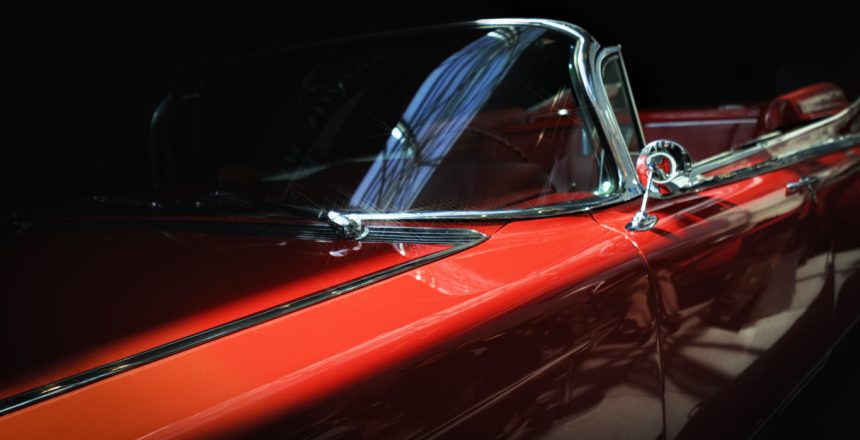Every vehicle has value, but some are defined by it. Learn why collectible car owners should take every precaution to protect their investments.
Key Takeaways
- Collectible chronology conflicts, but the utmost shipping care is always necessary
- Enclosed transport is the only way to travel for collectible cars
- Owner care pre-shipping is an essential factor
- Insurance is an excellent protection for collectibles
- Auto brokers are a bridge to the best shipping companies
Classics, vintage, and antiques are some of the most sought-after vehicles in the world. Knowing which characteristics define each class is the first step toward finding the best way — and the best auto transport team — to take care of them. Just how valuable collectible cars are can vary widely based on market forces and other factors, but their emotional worth is incontestable. This is why owners of these select machines must do all they can to preserve them.
Some quick (and debated) collectible definitions
Scarcity, design aspects, and simple age are the three basic criteria for judging older cars. The actual definitions aren’t quite so simple with states, auto insurers, and fans fielding varying opinions on the “right” designations.
- Classics: A “classic” needn’t be as old as it sounds. As little as 25 years need to pass before cars can qualify for the title. This is a contested number, however, with insurers and car clubs each having conflicting views on the necessary time frames. Opinions also vary from state to state, so owners should consult with local authorities before attaching that “classic” tag.
- Vintage: Some insurers view vintage as having been constructed between 1919 and 1930. Other models may qualify as vintage far earlier in the eyes of enthusiasts by virtue of being made in the Brass Era (1896 to 1915).
- Antiques: Qualifying for the oldest-sounding tag of the three may surprise you. The Antique Automobile Club of America rules that vehicles 25 years and older can carry the title. The American Collector’s Community holds a different view: 45 years and older.
There are two key lessons among all this dissent: The first is that some investigative work is required on the owner’s part to attach the right label to their collectible vehicle. The second is that protecting it during transport takes equal forethought along with some valid extra expense. Here’s what makes the extra cost worthwhile.
Collectible cars face particular shipping risks
Every vehicle faces varying degrees of exposure-dependent risk during the auto transport process. Most of these are significantly exacerbated by open-bed auto carriers, which is why collectible owners should always go the extra mile and choose enclosed shipping. This is more costly, but it helps tackle auto transport risks by:
- Reducing the risk of theft: Worst-case scenarios see vehicles lost to thieves before they reach their destination. Car criminals will be twice as attracted to a collectible, but their interest won’t be triggered if they can’t see the vehicle thanks to its own enclosed carrier.
- Minimizing the chances of damage: Dings, scrapes, and dents can all find their way onto a vehicle in transit. Enclosed auto transport goes a long way to avoiding this since much of this damage comes from flying road debris. The greater expense of hiring an enclosed carrier that houses only your collectible also removes the chances of another vehicle impacting yours.
4 steps that will increase your peace of mind when shipping a collectible automobile
The term “cutting corners” incorporates more than simply tightening your wallet. There are two other valuable expenditures — time and effort — that should be invested liberally if you want to ensure the safest possible passage for your collectible. Concerned owners should apply these by taking four important steps before shipping a collectible vehicle:
1. Research carriers thoroughly: Any carrier can claim they’re the right choice to transport your prized vehicle. Never take them at face value or be overly impressed by a high price tag. Take the time to research the company’s safety record, insurance status, and prior reviews to come to an independent decision. Here is how to vet potential carriers.
2. Be a conscientious owner pre-shipping: Owners who expend a little extra effort prior to shipping their collectible cars can save themselves a lot of money and stress later. Follow a few best practices by emptying the vehicle of all unnecessary contents, ensuring it is inspected (and, if necessary, repaired) before it leaves, and taking plenty of interior and exterior photographs. That last step will help prove your case if the collectible is damaged under carrier care.
3. Invest in insurance: If there is one thing owners of collectible vehicles know, it’s that you can never be too careful. Any carrier worth your consideration will have insurance of their own, but accidents can still happen and there’s no guarantee that the carrier’s coverage will be enough to repair or replace an expensive collectible vehicle. Look into auto transport insurance and consider it as a worthwhile short-term investment.
4. Hire an experienced auto broker: Cutting corners to save money can also mean cutting out those you perceive as middlemen. Auto brokers are middlemen in the very best and most cost-effective sense. They greatly speed up the search for a reputable and reliable auto carrier and help make their service history and pricing structure transparent.
Paying for a broker’s services gets you multiple trustworthy quotes and, when you’ve made your carrier selection, keeps you both connected with ongoing communication. You could certainly go it alone when seeking a collectible carrier quote, but there are some potentially costly variables that a broker can help you avoid.
Speak to Mercury Auto Transport for the best in carrier service
Mercury Auto Transport is a nationwide, full-service auto shipping company that connects buyers with reliable vehicle carriers anywhere in the country. We appreciate the high standards of care that are necessary to transport collectible vehicles.
Our process is transparent and trustworthy, and we can provide you with a car shipping quote in minutes. We’re always working to get you the best deal. Call us today to see how we can help!






